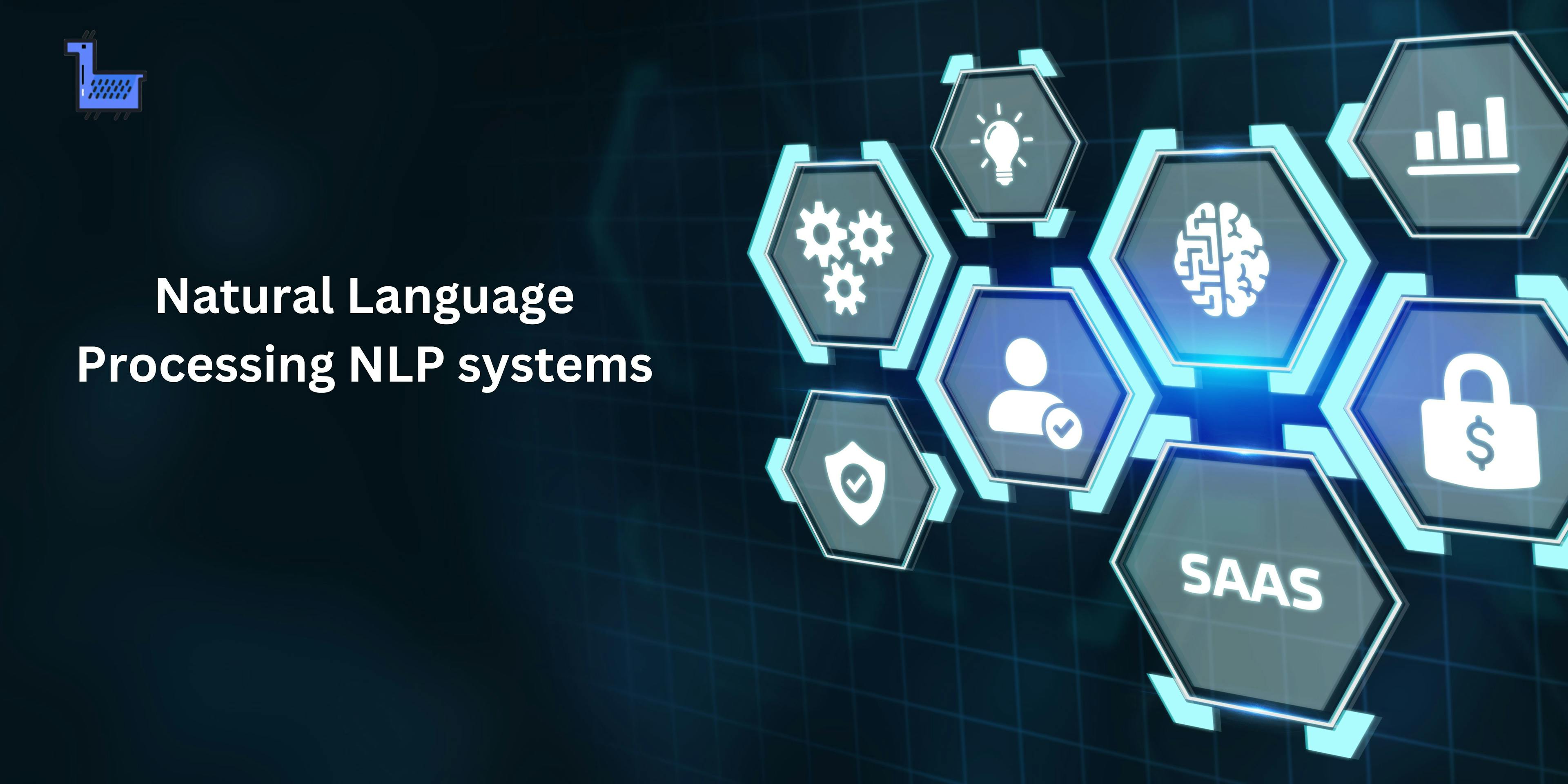What Is NLP? | How to Use Natural Language Processing!
Natural language processing is found in many machine learning systems, such as GPT-4. See here how NLP works and what it can do.

As we use voice assistants, chatbots, and text to communicate with artificial intelligence, natural language processing has become increasingly more important. This technology has revolutionized the way we interact with machine learning systems in human language.
It has applications in areas such as customer service, healthcare, finance, and education, as well as social media and search engine optimization. In this article, we will explore the definition, use, importance, and challenges of NLP models.
What is Natural Language Processing NLP?
Natural Language Processing is a subfield of Artificial Intelligence. It deals with the interaction between computers and humans in natural language. It involves teaching machines to understand, interpret, and generate human languages.
As the technology becomes more advanced, spoken, written, and sign language are possible results for inputs. The information it provides is heavily relied on already available text and speech data, from different sources. For example, the training data of GPT-4 is based on internet and book sources.
NLP uses various techniques to enable computers to comprehend and process human language data. These deep learning methods include machine learning, statistical analysis, and computational linguistics.

Why is Natural Language Processing Important?
With the help of natural language processing, computer systems can perform tasks and automate operations, especially when in comes to hospitality softwares. On top of that, AI's are also able to perform semantic analysis and entity recognition when prompted to.
Some ways in which businesses use a natural language input are:
- Analytics on business performance
- Machine translation
- Engagement and feedback from customers
- Extract text from any source
- Get responses to queries about trends
- Process documents and images
- Natural language generation
What is NLP Used For?
With its many applications in various fields, language models are used in communication, customer support, research papers, and more, as well as in scientific disciplines. See how:
Improved Communication With Natural Language Processing Algorithms
Through natural language understanding and varied training data, machines and people can communicate more effectively. Based on the prompts received, the NLP technology
The NLP system is able to analyze client feedback and give responses based on its findings. Chatbots and virtual assistants can also provide quick and accurate answers to customer queries, improving the overall customer experience.
Natural Language Understanding in Work Fields
In healthcare, NLP computer programs use machine learning methods to analyze medical records, detect diseases, and improve patient outcomes by identifying patterns and trends in medical data.
In finance, it can be used to analyze financial reports, news, and market data, helping to identify trends and opportunities for investment.
In social media, natural language processing does a sentiment analysis on online text data to get insights into public opinion and sentiment towards products and services. Then, companies use these findings to create better suited product designs and promotion materials.
Even in email marketing, a deep learning natural language model can detect spam and phishing. Its text classification features scan emails for various indicators of spam - bad grammar, inappropriate language terms, threatening words and more.
Deep learning models in education and language translation
While such a natural language processing model can de used by students for school work, the administration board is also able to track student performance and provide personalized learning experiences.
Natural language models can be used to automatically translate text and speech from one language to another. This way, people can communicate easily across different languages and cultures with a machine translation system.

Other NLP tasks
You can prompt deep learning models to do virtually anything, depending on the system you're using and the clarity of your input text data. Here are some NLP tasks the natural language generation NLG is able to perform:
- It can classify text - assign predefined categories to a given text, such as sentiment analysis or topic modeling.
- Named entity recognition NER - involves identifying and extracting entities such as people, organizations, and locations from text using natural language processing algorithms.
- NLP systems use part-of-speech tagging for a grammatical analysis. They then label all word forms in a sentence with its part of speech, such as noun, verb, or adjective.
- Word sense disambiguation uses semantic analysis to determine the word that makes the most sense in a given context. The word "bat" is a good example, as it is also an animal and an object.
- Sentiment analysis is one of the most used NLP tasks in Marketing. It involves determining the emotional tone of a text, whether it's positive, negative, or neutral, especially in online copies.
- Another task that involves NLP techniques is its speech recognition software. It is used to transcribe spoken words into written text.
- Deep learning models have language related tasks, such as automatic translation, which is very helpful in intercultural communication. The process is similar to using Google Translate, only having to add the translation prompt.
- Question answering involves automatically answering questions posed in natural human language. You can ask the natural language processing system anything. From top search engines to recipes, and even questions related to an engineering discipline.
- Text summarization involves generating a shorter version of a longer text. The language model is able to manipulate human language with specific machine learning methods.
- Topic modeling is the process of identifying topics or themes in a collection of texts.
When you give NLP tasks, make sure your text data has the intended meaning. That is - be as clear as possible and don't shy away from defining step-by-step what you want the process language model to do.

How Does Natural Language Processing Work?
Language models work by using a combination of deep learning techniques for natural language generation, enabling computers to understand and interpret human language. They use methods from machine learning, computational linguistics, and artificial intelligence.
Such systems follow the next steps in order to provide responses, which can be seen as a part of the natural language toolkit.
Tokenization is the first step in natural language processing - to break down text into smaller units called tokens, which could be words, phrases, or sentences. Then follows part-of-speech tagging. This step involves analyzing each token to determine its grammatical role in the sentence.
Parsing analizes the sentence structure to determine how words relate to each other. This step can help determine the subject, object, and verb of a sentence. Then, Named entity recognition features identify names, organizations, and locations within the text.
The sentiment analysis of text involves determining the emotional tone used, whether it is positive, negative, or neutral. This feature is especially important for workers in the social media field on text classification. They usually take a statistical approach to staying up to date with consumer behavior online.
If it is the case, the machine translation feature translates text from one language to another. Lastly, natural language processing can also be used for speech recognition, depending on the input and specific tasks. which involves transcribing spoken words into written text.

Natural Language Processing NLP Models
There are many NLPs that use deep learning and machine learning algorithms, such as ChatGPT by OpenAI. They provide responses based on what you ask them to do, including analyzing unstructured data formats such as HTML.
Long Short-Term Memory (LSTM) is a recurrent neural network RNN that is useful for processing sequential data, such as text. Its NLP algorithms can remember past inputs and use that information to make better predictions.
Transformer is neural network architecture that uses self-attention mechanisms to process input data. This model is particularly useful for tasks that involve long-range dependencies, such as language translation.
BERT (Bidirectional Encoder Representations from Transformers) is a pre-trained language model that uses a Transformer architecture. It has achieved state-of-the-art results on many NLP tasks, including natural language processing, sentiment analysis, and named speech recognition.
GPT (Generative Pre-trained Transformer) is a family of language models that are trained on large amounts of text data and can generate coherent and natural-sounding text. OpenAI's newest machine learning system GPT-4, is also able to process images using its deep learning training data.
Pros of Using NLP Tools
Natural language processing tools can automate tasks such as language translation, sentiment analysis, and content summarization, which can save time and improve efficiency.
They can also process and analyze large amounts of data more accurately than humans, reducing the likelihood of errors and inconsistencies.
Language models can uncover insights and patterns in data that would be difficult or impossible for humans to detect. They include features such as sentiment analysis of social media posts or customer feedback.
NLP tools provide personalized recommendations and responses to users based on their preferences and previous interactions.
Cons of Using Human Language Models
Such tools can be biased based on the data they are trained on, which can lead to unfair or inaccurate results. For example, a language model trained on biased or unrepresentative data can perpetuate stereotypes or discrimination.
Language processing systems can be complex and challenging to implement and maintain, requiring specialized expertise in both NLP and software development.
Natural language processing tools are not perfect and can make errors or misunderstandings, particularly when dealing with nuanced language or context. For this reason, you have to be as clear as possible in the prompt.
They can raise privacy and security concerns because they collect and process sensitive data, such as personal information or private messages. However, these ethical implications are being dealt with, being limited with every new machine learning systems.
High-quality NLP tools can be expensive, making it difficult for small businesses or individuals to access or use them.

Approaches to Natural Language Processing
Depending on the goals for such a model, the following approaches can be encountered. Keep in mind that no approach is perfect, and they come with advantages and disadvantages.
Rule-based Approach
In this approach, linguistic rules and grammatical structures are used to parse and analyze text. It can be accurate for simple sentence structures but may struggle with more complex or ambiguous ones.
Statistical Approach
This approach involves training machine learning models on large datasets of text to predict patterns and relationships between words and phrases. The statistical methods can be very accurate but requires large amounts of data and can be computationally expensive.
Hybrid Approach
This approach combines the rule-based approach and statistical natural language processing system. A rule-based approach can be used to identify sentence structure, and a statistical approach can be used to predict word meanings and relationships.
Deep Learning Approach
This approach uses neural networks to learn patterns and relationships between words and phrases. It is a subfield of machine learning that can achieve state-of-the-art performance in many NLP tasks, such as language translation and sentiment analysis.
Transfer Learning Approach
This approach involves using pre-trained models on large datasets for specific language tasks, such as language translation or text classification. These pre-trained models can then be fine-tuned on smaller datasets for specific applications.

The Future of Language Processing
The future of Natural Language Processing NLP is both exciting and promising. The development of more advanced chatbots and virtual assistants that can understand and respond to natural language input is an area of active research and development.
In the future, the natural language generation NLG system will most likely be perfected so conversation feel more similar to human language.
Machine translation systems that can process and analyze multiple languages are becoming increasingly important. Data scientists are are working towards using more modern NLP technology, that is able to better perform language tasks.
As NLP systems become more sophisticated, there is a growing need for them to provide explanations for their decisions and recommendations. For this reason, their deep learning training information is constantly updated.
The accuracy of natural language processing systems is expected to continue to improve, thanks to advancements in machine learning algorithms and access to larger and more diverse datasets. NLP is likely to be integrated with other technologies, such as computer vision and robotics, to create more advanced intelligent systems.
The issues of ethics and bias are becoming increasingly important, and there is growing awareness of the need for NLP methods to be designed and used in a fair and unbiased way.

